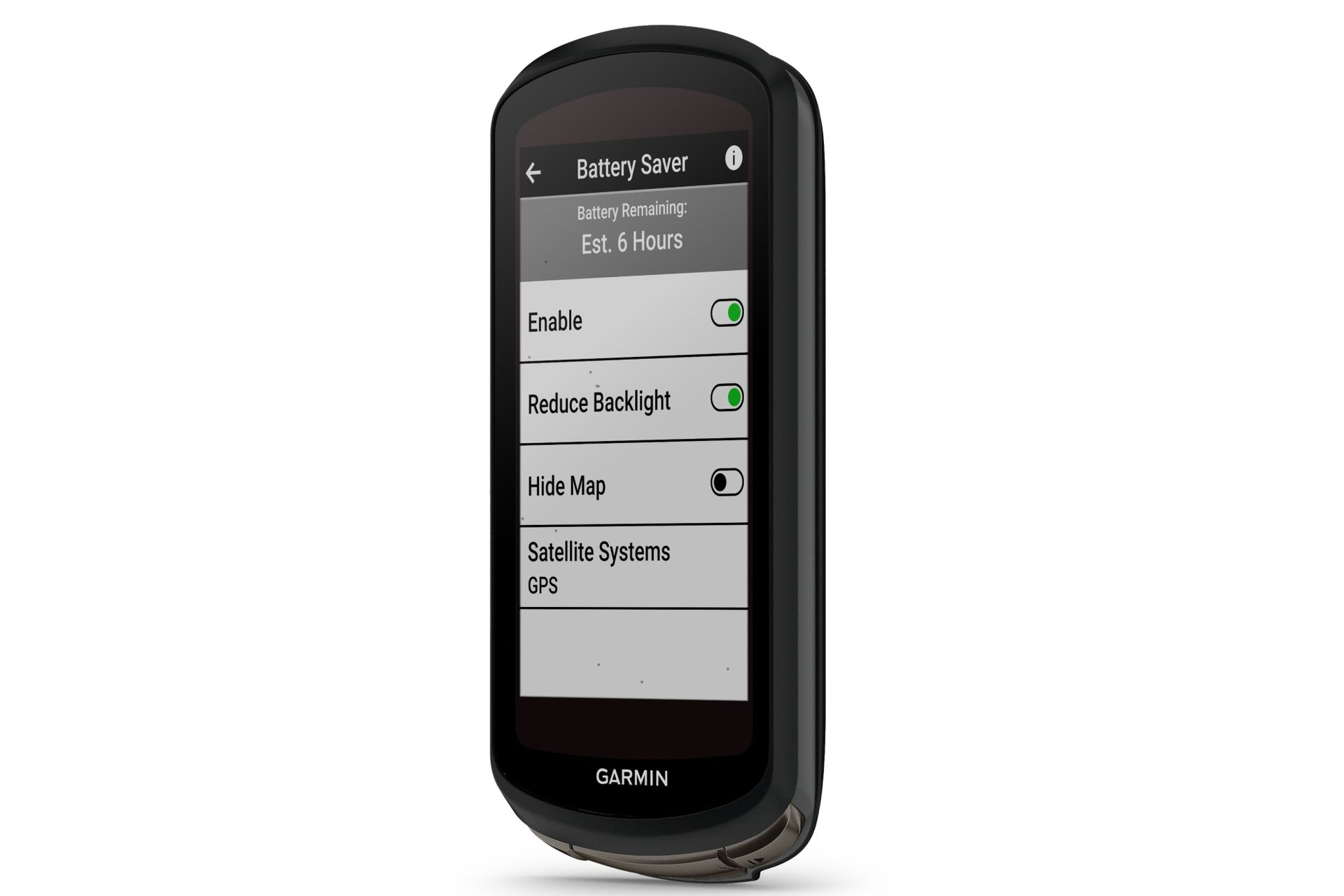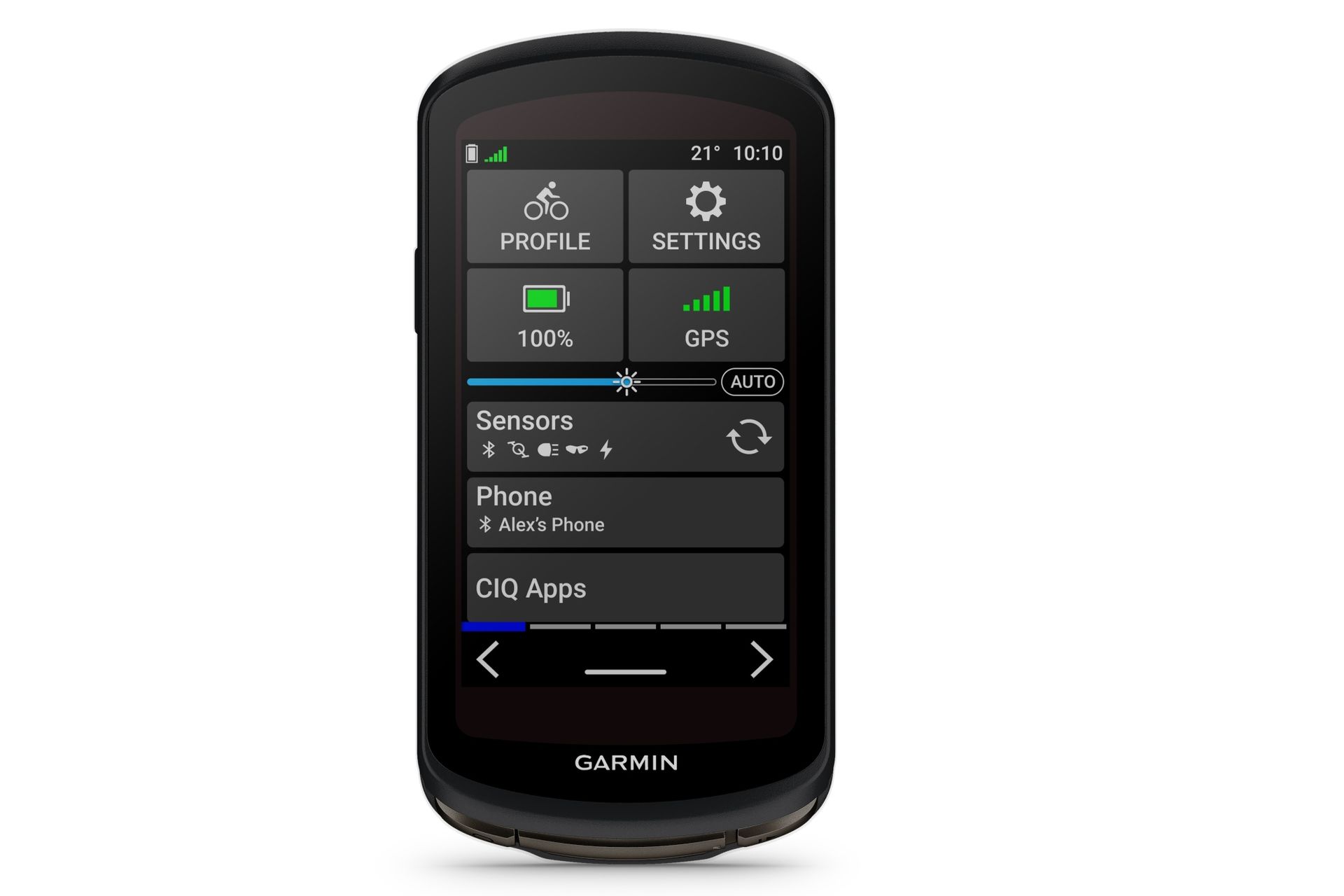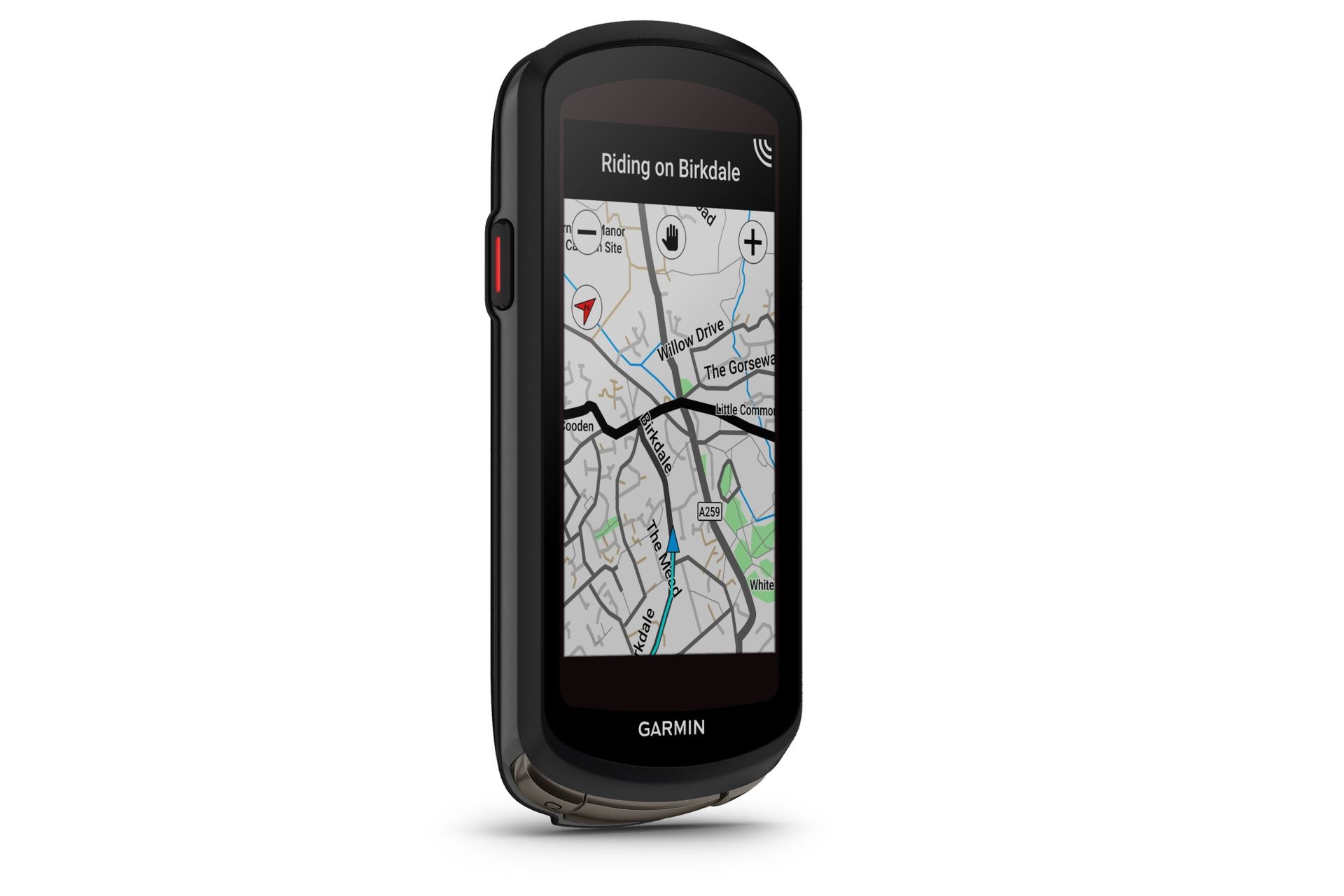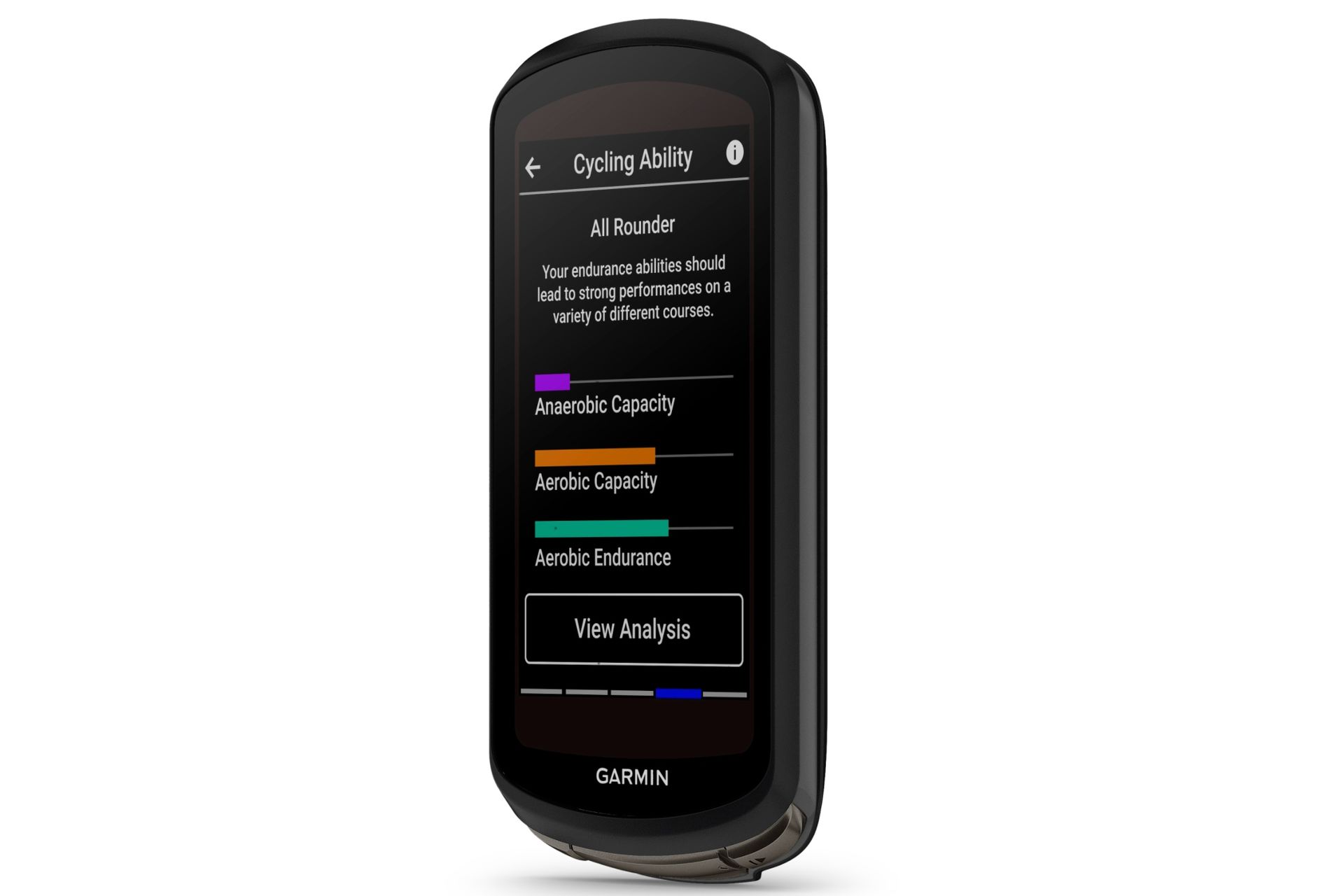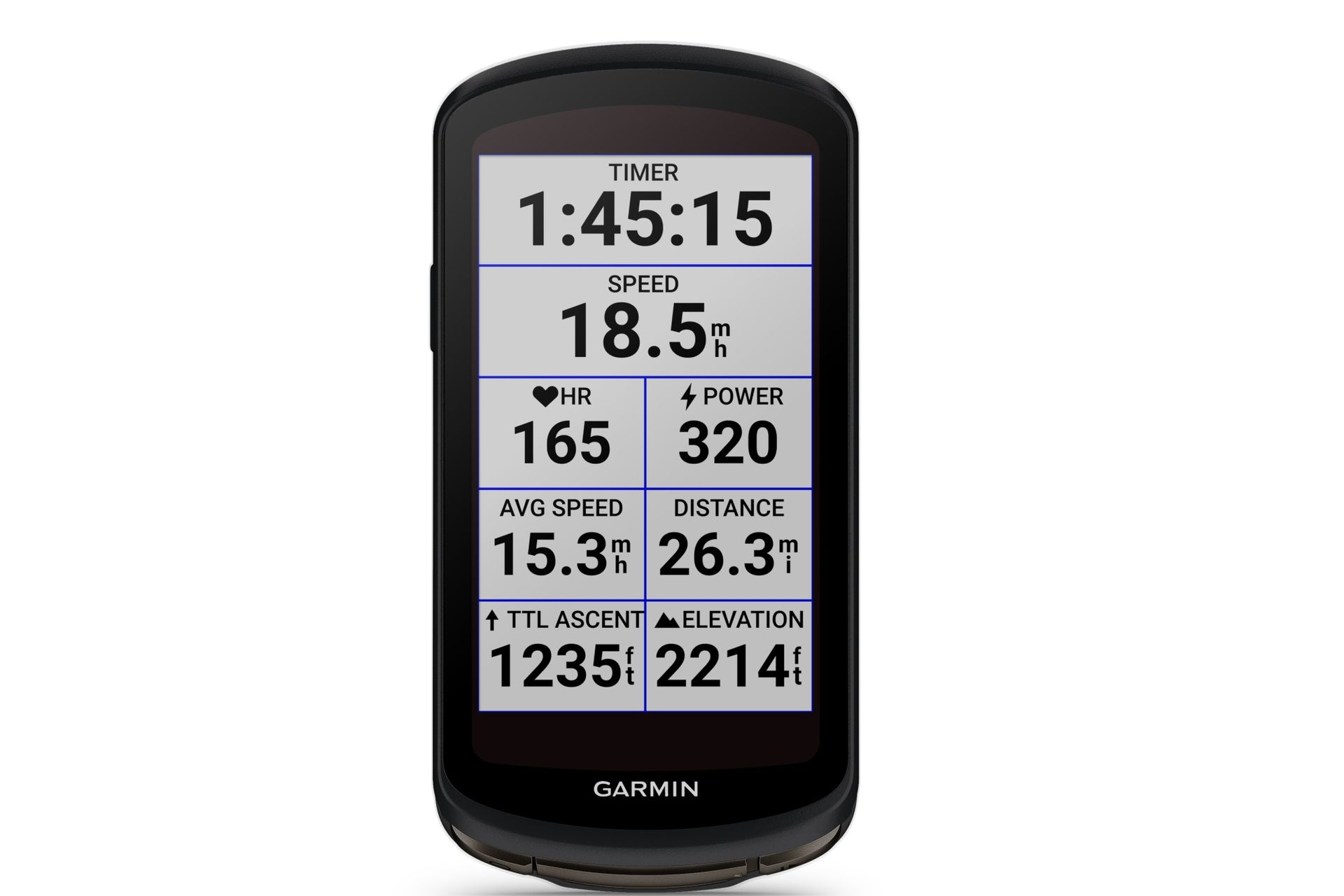Does the new Garmin Edge 1040 mean you'll only have to charge your cycling computer once every 100 hours?
The flagship bike computer can not only harness the sun's rays but it offers a more intuitive experience and much more accurate GPS data


Garmin has launched its newest range-topping bike computer, the Edge 1040 Solar. As the name suggests, the new solar-powered unit is capable of harnessing the sun's rays in order to provide, according to the brand, up to 100 hours of ride time between plug-in charges.
The new range of Edge 1040 units have also acquired multi-band GNSS (Global Navigation Satellite System) technology, which allows half-metre location accuracy, quicker acquisition and better signal reliability in dense environments, such as built-up cities or deep tree cover, potentially making it the best cycling computer on the market.
You can see what our initial thoughts of it are when we got to grips with one on our Garmin Edge 1040 Solar first ride review.
Garmin says that the Edge 1040 computers have also upped the navigation, performance, safety and connectivity features over its previous models for a new – but intuitive – user experience.
Over the past eight years, the brand has been refining its flagship cycling-specific navigation computers, with the Garmin 1040 being the sixth-ish iteration of the four-digit Edge model (if you factor in Plus and Touring versions, which have all had their time in the top slot of the Garmin Edge bike computer range).
The ability to solar charge the Garmin 1040 Solar theoretically gains the rider an additional 42 minutes of charge for every hour of riding (when in battery saver mode), or, when compared to the Garmin 1030, a huge 78 hours.
Put another way, if you were to leave the unit out in the full sun while enjoying some cake and coffee on a short cafe run, you could end up coming back with more charge than you left with.
Get The Leadout Newsletter
The latest race content, interviews, features, reviews and expert buying guides, direct to your inbox!
“Cyclists expect as much from their GPS bike computer as they do themselves, and that is why we are thrilled to introduce the Edge 1040 Solar,” said Dan Bartel, Garmin vice president of global consumer sales.
“Durable, accurate and ready to go the distance, the Edge 1040 Solar is the pinnacle of GPS bike computers. No matter where you ride, or what bike you choose to use, the Edge 1040 Solar is ready for any adventure – from remote gravel trails to epic climbs.”
The long battery life can be increased further still by selecting power saving settings.
Longer battery life
This excitement does need to be caveated with a heavy dose of North American/British territory riding reality, with the small print stating the assumption of 75,000 lux conditions during day time riding.
This would equate to pretty intense direct sunlight in the summer, even the shadow cast by the rider would knock this down significantly, to around 25,000 lux, and a more reasonable representation of our riding conditions are, mostly, overcast daylight which measures around 1,000 lux, which to put into perspective is about the same as a hospital theatre.
So perhaps not quite the magic long ranger we were hoping for. But our first ride of the Garmin 1040 Solar will give a more accurate picture of this feature in use.
So while our more equatorial friends may fare better with the Solar headliner, fear not, there is also a regular non-solar (and less expensive) Garmin 1040 Edge. Other than the lack of solar recharge and a smaller internal memory (32GB v 64GB), both units are exactly the same and together become Garmin's first bike computers to gain GNSS multi-band technology.
Garmin Edge 1040 units have also acquired multi band GNSS (Global Navigation Satellite System) technology
Improved connectivity and less time lag
This is a big deal for anyone suffering with connectivity and GPS time-lag issues as it not only harnesses multiple satellite systems compared with the usual one or two satellite positioning systems, but also a second frequency. This tandem approach should see a vast improvement on location accuracies and coverage, especially in mountainous, dense woodland or highly built-up areas.
This, combined with the upgrade to worldwide Garmin cycle maps, will appeal to a range of cyclists, from professional riders to tourers and bikepackers alike, bearing in mind the weather impact if you do opt for the solar version, and that the more satellite links you make, the more draw there'll be from the unit's battery.
Having operated in satellite navigation since 1989, Garmin launched its first GPS-enabled cycling computer, Edge, in 2006 and since then the household brand has become almost synonymous for bicycle computers in general.
Its predecessor, the Garmin Edge 1030 Plus ironed out pretty much all of the issues with mapping frustrations that we found with the original Garmin Edge 1000, so we're intrigued and curious to discover how this can be improved upon still.
The Edge 1040 units both use high-contrast, ride-type-specific maps that use Garmin's own Trendline, for bike specific routing.
Improved navigation
Gamin says that the new Edge 1040 includes advanced navigational tools, which makes it easier to stay on, or arguably off track. High-contrast, ride-type-specific maps use Garmin's own Trendline, the popularity routing that uses Garmin Connect data to assess the most cyclist friendly routes.
We're also promised a modernised user experience, making the turn-by-turn navigation easy to follow, as well as return-to-route option, in case you explored off the planned path and want to return to it from a different point.
As well as better connectivity and coverage, this latest offering from Garmin builds on the work of the Edge 1030 (2017) and more recent Edge 1030 Plus (2020), which both were given faster processors and became longer lasting than their precursors.
On-board coaching
The Garmin Edge 1040 gains the biggest jumps in terms of onboard coaching and virtual directeur sportif input based on your riding data and lifestyle tracking, assuming of course that you have the (sold separately) compatible additional sensors.
Garmin says that the real-time stamina insights monitors and tracks exertion levels throughout your ride, while the cycling ability and course demands helps classify strengths and weaknesses as a cyclist. Both aim to improve performance and help you prepare for challenges of a specific riding course.
With the help of recommended power targets, if you are using a compatible power meter, you literally have data interpretation on the fly, meaning blowing the doors off, or missing a (realistic) goal could now be things of the past.
Your existing data fields can be imported directly from your Garmin Connect profile
Keeping existing data fields
The other as expected measures and data fields, VO2max, recovery, training load etc, all feature, and it also inherits similar set-up porting to the Edge 1030 Plus. This nifty feature does away with the painful set-up admin thanks to custom ride profiles pre-populated based on previous Edge data, ride types and sensors. You can then control the rest from your smartphone and the Garmin Connect app.
Talking of smartphones, you still very much need one on board for every ride. It would have been the show stopper for sure if the Garmin had gained its own autonomy and allowed the phone to stay home, but alas no. It's probably down the R&D pipeline somewhere, but I can't lie, it's a little disappointing to accept that I'll still have to wrap my phone in a sandwich bag and lodge it in valuable back pocket real estate in order to access the safety and connectivity features, such as the assistance and LiveTrack.
That said, the 1040 Solar does work with Garmin inReach satellite communicator devices with no smartphone required. In this setup riders view and reply to messages, share trip data and trigger interactive SOS alerts - but that does require a separate inReach subscription.
How much the Garmin Edge 1040 cost?
Clearly the elephant in the room is the 'how much' question, and there's no prizes for guessing 'a lot'. The Garmin Edge 1040 Solar has a suggested retail price of $749/£629.99, with the non-solar charging version, the Edge 1040, a suggested retail price of $599/£519.99.
It's certainly a considered purchase. Will it be worth it? Good question. On paper, there's all you could ever need in terms of how, where and when to ride your bike for improved performance and rider experience. It's a lot to live up too and we can't wait to put it to the long-term test and tell you more.
When can I buy a Garmin Edge 1040
When does the latest bike computer land in the shops?
Immediately. Garmin says that both the Edge 1040 Solar and Edge 1040 are available now.
Are we likely to see new Garmin Edge 840 and Edge 540 launches too?
Do other Garmin units get upgrades too?
No, well not for the moment. The Edge 1030 was originally launched in 2017 with the Edge 1030 Plus landing only two years ago, so we this is a timely update. The Edge 830 and Edge 530 were launched in 2019, so updates to '40s aren't due just yet.
What's the main difference between Garmin Edge 1030 Plus and Garmin Edge 1040?
What's new and what's stayed the same?
In terms of screen size and clarity (pixel count) they are identical. Dimensions are ever so slightly increased, 58 x 114 x 19 mm for the Edge 1030 Vs 59.3 x 117.6 x 20.0 mm for the Edge 1040.
This slight dimension increase also gains the Edge 1040 an extra two grams, so it now weighs 126g (4.4oz) for the unit alone.
Battery life has been upped, depending on the version you opt for, with the Edge 1040 Solar running a claimed 45 hours and the Edge 1040 35 hours of demanding use. This is a difference of 11 or 21 hours over the Edge 1030 plus. We've covered the solar specifics below.
The satellite operating system is now multi-band and frequency, as mentioned above, and the Edge 1040 Solar gains 64gb of internal memory over the non-solar Edge 1040, which keeps the same 32GB as the Edge 1030 Plus has.
Mapping has also moved on both the new Edge 1040 units to be worldwide over the standard Garmin cycle map.
The analytical capabilities have also upped on the Edge 1040 computers to include power guide, real-time stamina, cycling abilities and adaptive training plans.
The rest of the training, planning and analysis features as well as mapping and compatibility with Varia, ANT+ shifting and smart trainer control are carried over from the existing Garmin Edge 1030 Plus unit.
But one big hurrah for many will be the 'pause navigation' feature, which allows you to nip off for a coffee or call of nature, and then hold your place rather than the auto re-routing which can be a big cause of frustration to some riders.
How long does the Garmin 1040 Solar battery last with just solar charging?
Garmin says if you're using the Edge 1040 Solar in battery saver mode, you can get up to 100 hours use between charges. This will vary according to light levels, but it calculates as an additional 42 minutes per hour of activity in bright sunshine.
How do the new personal training features of the Edge 1040 work?
Will these improve my performance on the bike?
There are a handful of new editions to the Garmin Edge 1040 that aim to help you improve as a rider.
The Power Guide helps you manage your efforts on a course, with recommended power targets, assuming you have a compatible power meter.
Real-time stamina uses insights from your riding history to help you keep an eye on how long you can keep pushing for.
Cycling ability classifies your strengths and compares your cycling ability to the demands of a specific course, allowing you to focus on training and improving in the right areas.
Hannah is Cycling Weekly’s longest-serving tech writer, having started with the magazine back in 2011. She has covered all things technical for both print and digital over multiple seasons representing CW at spring Classics, and Grand Tours and all races in between.
Hannah was a successful road and track racer herself, competing in UCI races all over Europe as well as in China, Pakistan and New Zealand.
For fun, she's ridden LEJOG unaided, a lap of Majorca in a day, won a 24-hour mountain bike race and tackled famous mountain passes in the French Alps, Pyrenees, Dolomites and Himalayas.
She lives just outside the Peak District National Park near Manchester UK with her partner, daughter and a small but beautifully formed bike collection.
-
 Forget stiffer and more aero - here's the tech we're really excited for in 2025
Forget stiffer and more aero - here's the tech we're really excited for in 2025The cycling industry never stands still, here's what we're excited for next year
By Joe Baker Published
-
 I've received some terrible cycling-themed Christmas presents over the years - and I treasure them all
I've received some terrible cycling-themed Christmas presents over the years - and I treasure them allEach bike-patterned gift is a reminder that we cyclists stand for something
By Tom Davidson Published
